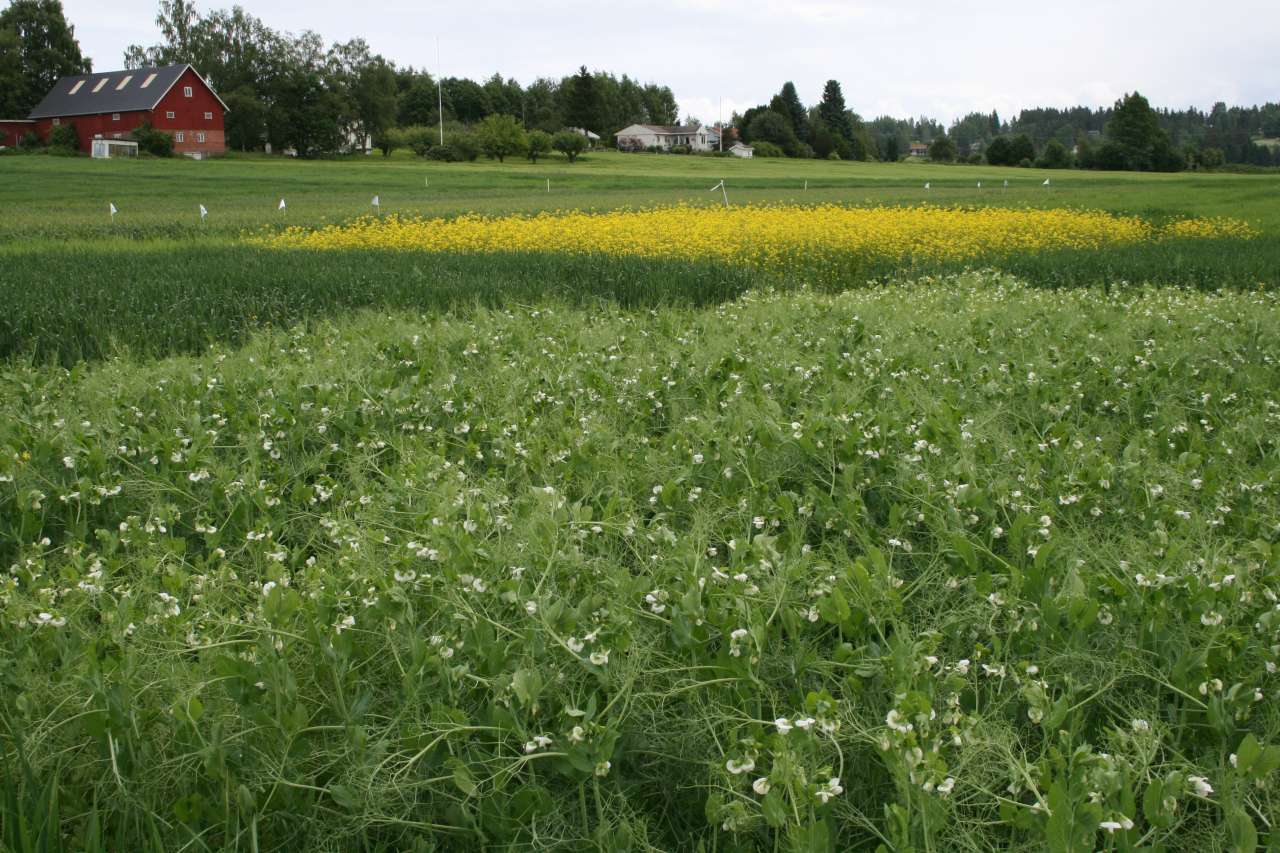The financial benefit of crop rotation in grain farming

A larger proportion of Norwegian grain should be rotated with other crops, ideally oil and protein crops. This can improve both quality,harvests and economic results.
The purpose of crop rotation is to avoid growing the same crop on the same piece of land over a long period of time. Growing different crops in succession is beneficial for disease resistance, nutrient availability, and soil structure. In most cases, there is much to be gained by increasing the number of different species in rotation.
“Although a lot has happened, especially the extent of broad bean cultivation, the effects of crop rotation are still undervalued,” says researcher Unni Abrahamsen. The use also varies greatly from county to county.
When you evaluate the profitability of different plants, you should also take into account the effects they can have on the next year’s crop. Through KornFuth and other research projects, Abrahamsen and her colleagues have researched the effects of relevant plants as cover crops in grain crop rotation.
During the first year of the KornFuth project, they grew wheat, oats, summer rape, peas, and broad beans. The next year, all of the fields were used to grow wheat. It is important to note that the fields were treated in the most “normal” way possible. This ensured that the results were similar to what would likely occur on a normal grain farm. In 2016 and 2017, several fields were harvested to record the effects on the crops.
“The trials demonstrated that both oil crops and broad beans added significant value when grown prior to wheat, to a degree of 200–300 NOK per acre. This is thanks to both a larger harvest and better quality,” says Abrahamsen. The value of peas and oats was less certain.
“We did not measure the value of reduced disease in this project, but other projects have shown that peas and oats have substantial value as cover crops in connection with disease eradication, to the same extent as oil crops and broad beans. In the BRAKORN project, we look more closely at nutrient absorption and soil structure after oats and oil crops are grown prior to wheat.”
Contacts

Contacts

